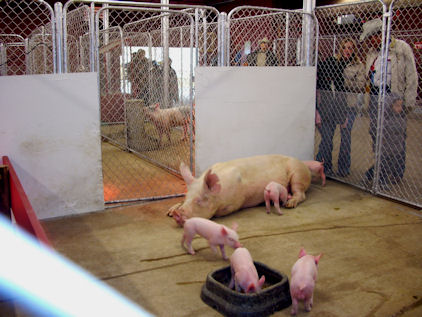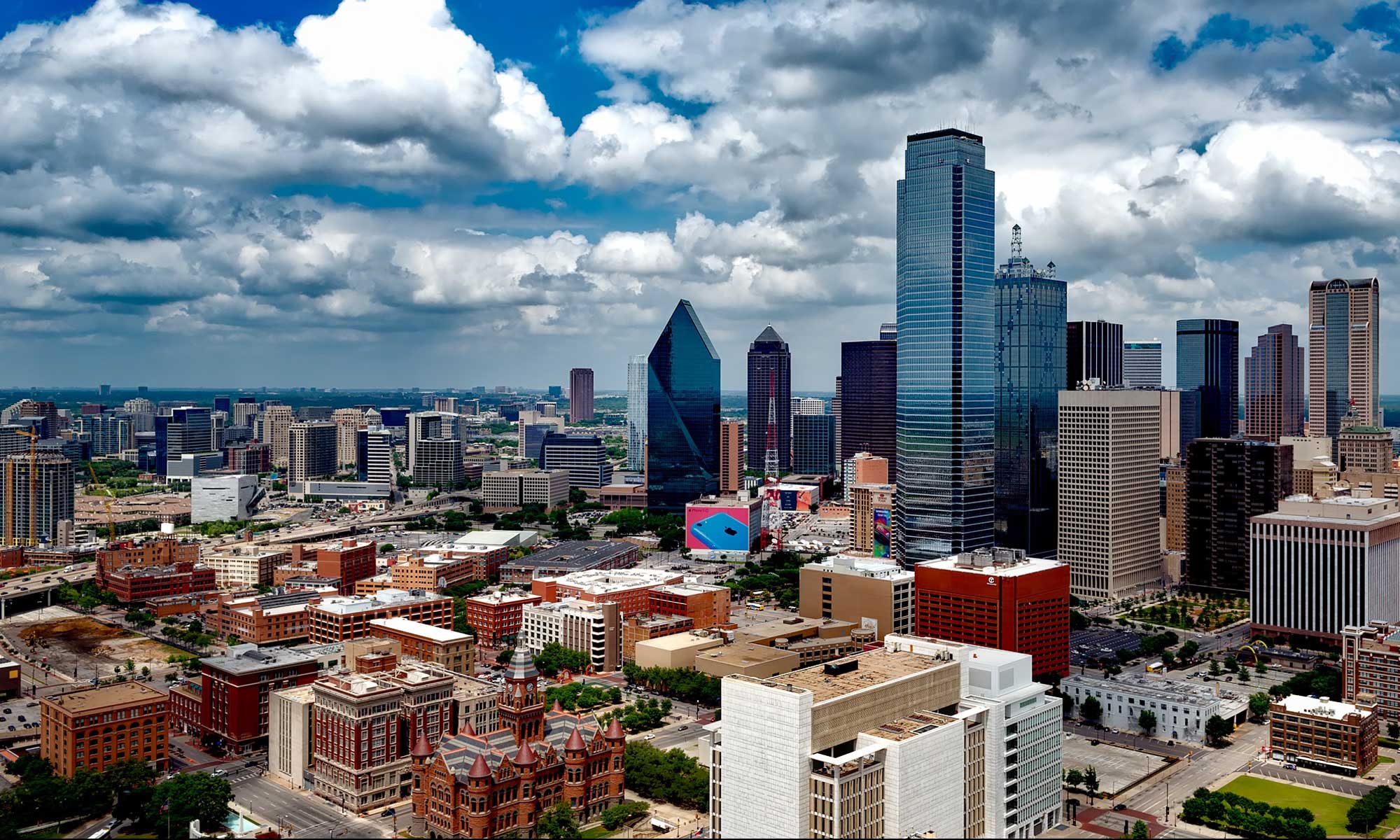I’m back again, with the rest of my entry on the famous and fascinating Fort Worth Stock Show and Rodeo, which will be in town at the Will Rogers Memorial Center through February 3, 2008. I left off last time just as we were about to enter the livestock area, which I’m sure you will all find most fascinating.
I suppose I’m kind of an odd duck when it comes to agriculture. I was raised semi-rural, so I was exposed to cattle, chickens, bunnies, pigs, horses and the like on a fairly regular basis when I was younger,* and of course livestock are often hard to avoid when you’re a field archeologist, as I used to be. Plus, my Dad ran a cattle ranch when I was in college, so I was exposed to livestock a lot there. However, I’m enough of a city slicker that I still find them all somewhat fascinating. If you don’t, I’ll try not to bore your ears off.
First of all: if you’ve ever wondered what a Texas Longhorn looks like, meet Rusty.

He’s the Fort Worth Star-Telegram newspaper’s mascot, and he’s typical of the breed: orange with white spots along his bottom half, and of course those huge horns. Longhorns are an interesting breed. They’re uniquely Texan, and date from the initial exploration of Texas by the Spanish conquistadores back in the 1500s. As the story goes, the explorers drove along with them large herds of cattle, pigs, goats, and sheep, and every time they crossed a major watercourse, they left behind a breeding pair of each species. The sheep and goats died out; the pigs became our native feral populations; and over the centuries, the Spanish cattle evolved into the classic Longhorn you see here.
There are four pavilions at the Stock Show dedicated purely to cattle, and just one for every other major type of livestock (poultry, sheep, and swine); that should give you an idea how important cattle are to Texans. The pavilions are all interconnected at the front end, so you could easily walk from one to the other. They’re unheated, too, and full from back to front with high school kids and their Future Farmers of America projects. I didn’t take any pictures of the cattle barns, because I figure Rusty, Elsie, and Beau were enough cattle for you. Sure, there are all kinds of breeds, but in the end they’re just cows, right? Big Macs on the hoof. Mmmmm.
One thing that I was impressed by was the exhibit that showed how raw milk was converted into cheese. They had this video I would have liked to have sat down with and watched end to end. You know, it’s an amazingly complex process, and you have to wonder how they discovered it in the first place — one of the things that makes the spoiled milk into cheese is an enzyme called rennine that comes from calf’s stomach (a.k.a. rennet), and who thought of that? I have to say that the process is a lot more complex than I expected, and I’m not sure the video would be appropriate for those of a delicate constitution. Did you know for example, that they dye the cheese while it’s still liquid, to make it a more appealing color? Yep.
We finally got out of the cattle exhibitions into some of the other areas. To give you an idea of what these pavilions are like and how big they are, here’s a photo of the interior of the sheep pavilion.

Aren’t they sweet, with their little blankies? Well, it was colder than a witch’s…refrigerator in there, so I don’t blame them. Definitely the kind of weather to separate the sheep from the goats, to use an expression you had to know was coming. And speaking of goats, we saw an amusing one in one of the pavilions. Her name is Emma. They had her chained up in a cage in the middle of a display about the economic value of sheep and goats, and she was not happy about her inability to get out. (If she hadn’t been chained she would have escaped in a flash.) She did, however, like to pose for photos.

Goats are funny. They can be ornery as adults, but the babies — the original kids — are so amazingly cute and funny that it’s almost impossible to believe they’ll grow into something as likely to spit in your eye as look at you.
Moving right along, we come to the poultry pavilion. I’ll admit, I took far too many pictures of chickens. I won’t inflict you with all of them, but I thought they were fascinating. It’s amazing how they’ve been bred into so many types. There are some as large as turkeys, and others as small as pigeons. This black guy was one of the bigger type.

Finally, we spent a little time in the Children’s Exhibit, which sadly was not set up to allow petting and ease of photography — they were more interested in keeping people from putting crap in the cages, I think. There were miniature donkeys, ponies, baby ducks (lots of those), baby chicks (some in the process of being born, which was cool), and they had a really cool batch of piglets. These little guys were amazingly pink and active, and quite curious about all of us apes staring in at them.

That basically spelled the end of our day at the Stock Show. It was a nice trip, highly recommended, and we had a great time. There’s lots of interesting stuff to learn and see, but bring your coat if you want to see the stuff outside the Carter Exhibit Hall, especially the animals. It’s hard to say with global warming and all, but it’s still the beginning of the year, so it’ll probably be cold.
****
The 112th Fort Worth Stock Show and Rodeo continues through February <> 3, 2008. Parking is $6. General Admission Tickets cost $8 for adults, $4 or folks above 55 and under 16, and little kids under age 6 get in free. You have to pay extra for the rodeos, of which there are several; they cost $22 each. Even if you don’t make it this year, you can catch it next year. See their web site for details at http://fwssr.com/.
*And no, I never engaged in cow-tipping when I was a kid. Cows are surprising large, and a frightened cow can hurt you. Besides, I wasn’t that rural.
- Also check out the San Antonio Stock show and Rodeo
